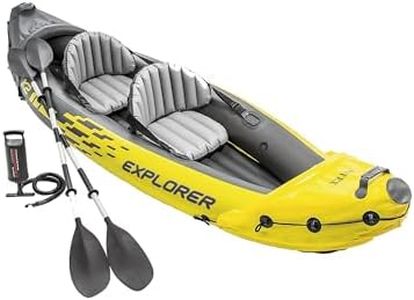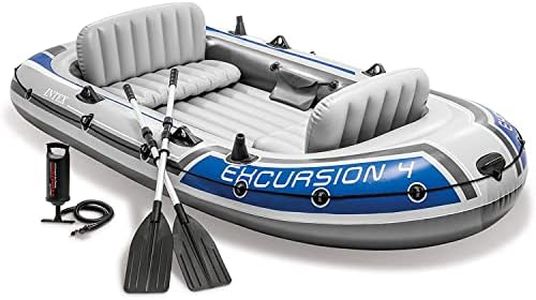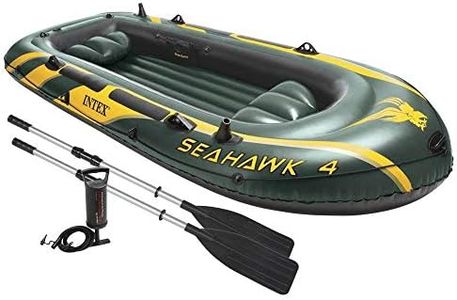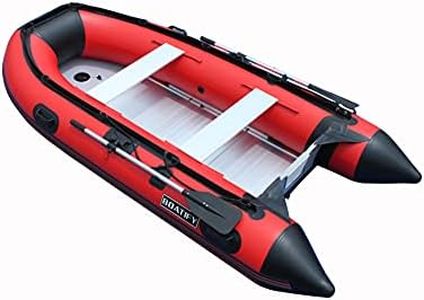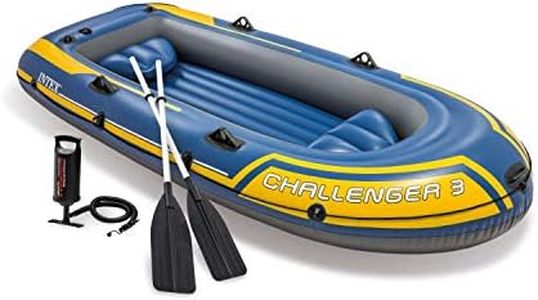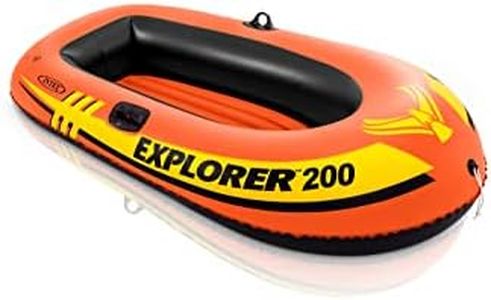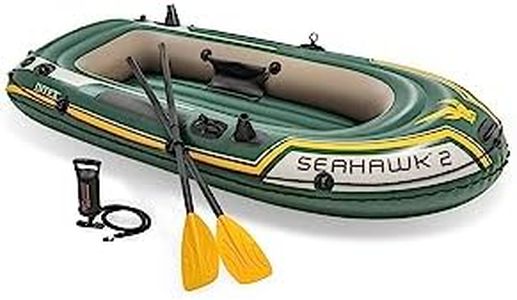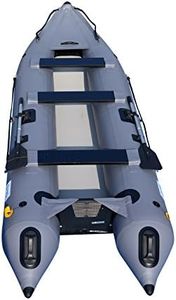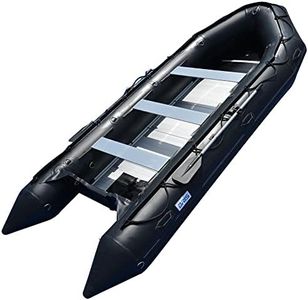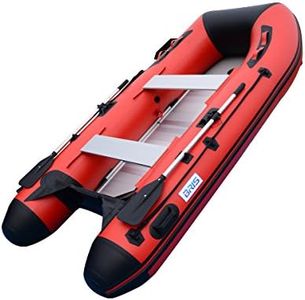10 Best Inflatable Boats 2025 in Canada
Our technology thoroughly searches through the online shopping world, reviewing hundreds of sites. We then process and analyze this information, updating in real-time to bring you the latest top-rated products. This way, you always get the best and most current options available.

Our Top Picks
Winner
INTEX 68307EP Explorer K2 Inflatable Kayak Set: Includes Deluxe 86in Aluminum Oars and High-Output Pump – SuperStrong PVC – Adjustable Seats with Backrest – 2-Person – 400lb Weight Capacity
The Intex Explorer K2 is a solid choice for anyone looking for a two-person inflatable kayak that’s easy to transport and set up. Made from rugged vinyl with a polypropylene blend, it offers good durability for casual use on lakes and mild rivers. Its dimensions (about 10.3 feet long and 3 feet wide) and 400-pound weight capacity mean it comfortably fits two adults or an adult and child. The inflatable I-beam floor adds stability and comfort while paddling, and the kayak's multiple air chambers improve safety by preventing full deflation if one chamber is punctured. The removable skeg helps keep the kayak moving straight, which is helpful for beginners or leisurely paddling.
Portability is a strong point: it inflates and deflates quickly using the included high-output pump and folds down compactly into the provided carrying bag along with disassembled paddles, making storage and transport easy. The adjustable inflatable seats with backrests add comfort for longer trips. On the downside, it is heavier than some other inflatables at nearly 16 kg, which might make carrying it over long distances more challenging. The vinyl material is durable but may be less resistant to sharp objects compared to heavier-duty fabrics, so care is needed to avoid punctures.
Designed primarily for calm waters and recreational use, this kayak isn’t suitable for rough rivers or ocean conditions. The Intex Explorer K2 provides a user-friendly, stable, and portable inflatable kayak experience that is ideal for beginners and casual paddlers who want to enjoy calm water adventures with a friend.
Buying Guide for the Best Inflatable Boats
Choosing the right inflatable boat can make your time on the water safer, more enjoyable, and better suited to your needs. Before you buy, think about how you plan to use the boat—whether for fishing, recreation, short trips, or as a tender for a larger vessel. Consider how many people or how much gear you’ll need to carry, where you’ll be boating (calm lakes, rivers, or open sea), and how you’ll transport and store the boat when not in use. Understanding the key features will help you find a boat that matches your lifestyle and expectations.Most Popular Categories Right Now
